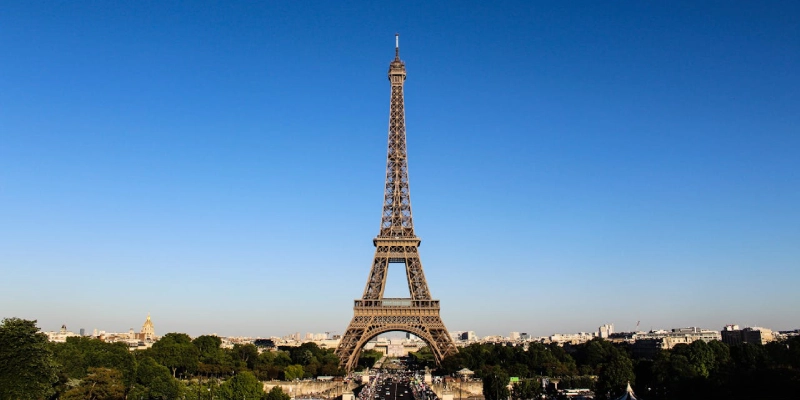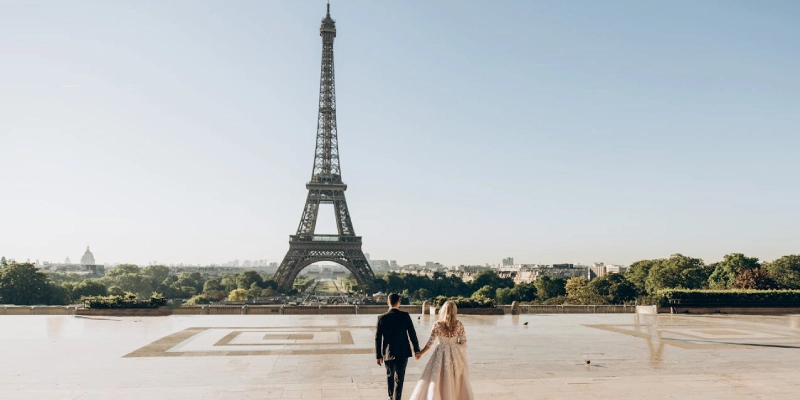The Eiffel Tower: A Marvel of Architecture and Engineering
The Eiffel Tower, an iconic symbol of France, is one of the most recognized structures in the world. Located in the heart of Paris, this magnificent iron tower attracts millions of visitors each year. Known for its stunning design, rich history, and breathtaking views, the Eiffel Tower remains a must-visit landmark. Whether you're a history enthusiast, an architecture lover, or a traveler seeking adventure, the Eiffel Tower has something unique to offer.
The Eiffel Tower was designed by Gustave Eiffel, a French engineer known for his expertise in metal structures. The tower was built as the centerpiece for the 1889 Exposition Universelle (World’s Fair) held in Paris to celebrate the 100th anniversary of the French Revolution. The aim was to demonstrate France’s technological and industrial advancements.
Construction began in 1887 and was completed in 1889, taking just two years, two months, and five days to build. The tower stands 330 meters (1,083 feet) tall and was the tallest structure in the world until the Chrysler Building in New York surpassed it in 1930. The Eiffel Tower was built using wrought iron, consisting of 18,038 individual iron pieces held together by 2.5 million rivets. Over 300 workers were involved in assembling this remarkable structure. The meticulous engineering and design ensured that the tower could withstand strong winds and harsh weather conditions.
The Eiffel Tower’s design is a perfect blend of aesthetics and functionality. It features three levels accessible to the public:
- First Level: Offers a glass floor, exhibition areas, and restaurants.
- Second Level: Provides incredible views of Paris and fine dining experiences.
- Third Level: The summit, offering panoramic views and Gustave Eiffel’s private office.
The Eiffel Tower is one of the most visited monuments in the world, attracting over 7 million visitors annually. It serves as a major cultural and historical site, symbolizing romance, art, and innovation. Tourists can enjoy various experiences such as:
- Elevator rides to the top for breathtaking views of Paris.
- Fine dining at the 58 Tour Eiffel or Le Jules Verne restaurants.
- Illuminations at night, where the tower glows with 20,000 golden lights.
- Seasonal events, including ice skating in winter and light shows during national celebrations.
- The tower shrinks by about 15 cm (6 inches) in winter due to temperature changes.
- Gustave Eiffel engraved the names of 72 French scientists, engineers, and mathematicians on the tower.
- During World War II, the French cut the lift cables so the Nazis couldn't access the top.
- The Eiffel Tower sways up to 7 cm (3 inches) in strong winds.
- Originally, it was meant to be demolished after 20 years, but its use as a radio transmission tower saved it.
As a top tourist destination, the Eiffel Tower generates millions of euros annually in revenue. It supports various industries, including:
- Tourism: Hotels, restaurants, and souvenir shops thrive due to its popularity.
- Employment: Thousands of jobs are linked to its maintenance, management, and visitor services.
- Advertising: The tower is often used in international marketing campaigns, further boosting France’s global presence.
To ensure its longevity, the Eiffel Tower undergoes regular maintenance and renovations. Future plans include:
- Eco-friendly initiatives: Reducing energy consumption with LED lighting and solar panels.
- Technological advancements: Enhancing visitor experience with augmented reality tours.
- Structural reinforcements: Improving durability for future generations.



